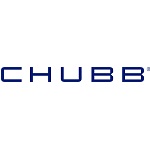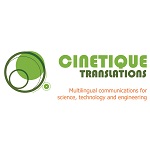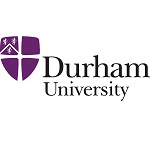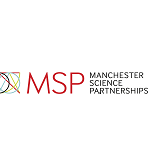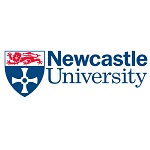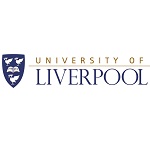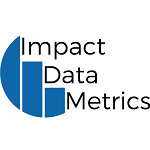Industrial Partners required for Mathematics Student Projects
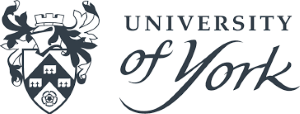 The Mathematics Department at the University of York is looking for industrial partners to provide projects for final year mathematics undergraduates. These projects are carried out at the University with an academic supervisor providing mathematical expertise.
The Mathematics Department at the University of York is looking for industrial partners to provide projects for final year mathematics undergraduates. These projects are carried out at the University with an academic supervisor providing mathematical expertise.There is no financial cost to the external partner and these projects can produce useful, even publishable results. Although we do expect some interaction with the external partner, this can be via video conferencing and should not require much company time - unless perhaps the project is going particularly well! Confidentiality agreements can be arranged where necessary. Further information, including examples of suitable projects can by obtained by emailing : Julie.wilson@york.ac.uk.
Why do we do this and how does it work?
Final Year Projects with external collaborators
During the final year of their undergraduate degree, Mathematics students carry out a research project that accounts for a third of their marks for the year. We aim to enhance students’ experience by offering projects in collaboration with external partners. This opportunity will only be offered to students attaining sufficiently high grades in order to ensure good students are involved. They should be able to work in a largely autonomous fashion, but will have an academic supervisor providing mathematical expertise as well as contact with the external partner. Furthermore, collaboration between the academic and external partner beyond the scope of the project is encouraged as impact outside academia is important to the University.
The project will be carried out at the University although a site visit could be extremely beneficial for the student. Provision of a project will involve no financial cost to the external partner and interaction with the student should involve very little time. Academic supervision will follow the guidelines for standard final year projects, but additional meetings with partners can be arranged. Projects begin at the start of the academic year and students work on them throughout the year. When considering what might be achieved, it should be remembered that students will be spending two-thirds of their time studying other modules. Ideal projects would be ideas that the external partner doesn’t have time to investigate or that require mathematical expertise rather than projects that require immediate results. Students choose from a database of possible projects, and it should be noted that some projects may not be assigned.
In order to allocate projects to suitable students a short project description is required before the end of March. Example project descriptions for current projects are provided below.
Confidentiality
Non-disclosure agreements can be set up where necessary, but the University must be able to assess the student's work and reports must also be available for assessment by relevant External Examiners. In this case, reports would not be removed from the examination room and can be returned to the company after assessment. Audiences for talks and posters can also be restricted.
Assessment
Students need to demonstrate their ability to carry out an independent investigation and present a clear account of their findings in a project report. They will also need to communicate their results in the form of a short talk or a poster session to which the industrial partner will be invited.
Example project descriptions
PROJECT 1: Who killed the crabs? Understanding the 2021/22 mass mortality event on the Yorkshire coast, in collaboration with the Whitby Lobster Hatchery.
The recent mass shellfish mortality event on the Yorkshire coast has caused alarm in the fishing community, and explanations are necessarily incomplete due to limited data availability. We will use mathematical models of local plankton dynamics, informed by local data and expertise from the Hatchery and other fishing groups, to assess whether such events are more likely in future. We may also investigate possible alternative explanations for the mortality event. The student will need enthusiasm and independence, and skills in mathematical modelling (dynamical systems) and/or in statistical analysis, and there is likely to be a good amount of coding and computation.
PROJECT 2: Authentication of honey in collaboration with Fera Science Ltd and the UK Honey Association.
Honey has become a target for economically motivated food fraud, being in high demand, and short supply. This may involve the addition of cheap sugar syrups to increase the volume of honey or claiming a false geographic origin or floral source to increase the product’s retail value. Nuclear Magnetic Resonance (NMR) has recently been used to detect the adulteration of honey with sugar syrups with highly controversial results. In collaboration with the UK Honey Association, Fera Science Ltd are now curating an extensive database to demonstrate the natural variance in honey from countries across the globe. The aim of this project is to investigate the extent of variation between authentic honey samples and, if possible, to determine a method for the reliable detection of adulterated samples using statistical pattern recognition methods.
PROJECT 3: Detecting alcohol fraud in collaboration with Eluceda Ltd
Food and drink fraud includes the adulteration, counterfeiting and mislabelling of products and is usually carried out to increase financial profit by reducing manufacturing costs, mimicking an established brand or improving the perceived quality of the products. Alcohol fraud, particularly the adulteration of aged whisky, has huge economical and health impacts. Eluceda is a detection technology business that provides testing services for brand protection and other industrial processes. The aim of this project is to differentiate between different blended whisky brands and identify adulterated samples. Data will be collected using a method called cyclic voltammetry, which will be optimised by identifying the best sensor, optimal scanning speed and best combination of cycles for discrimination.
PROJECT 4: Incorporating uncertainty, leadership and morale into simplified combat models, in collaboration with Improbable.
Improbable Defence's research team confronts the most demanding scientific and technical challenges at the intersection of simulation, data science and AI to clear the path for trusted, intelligent simulations as a strategic resource to address real-world defence problems. This project will develop and explore simplified combat models with a view to adding elements such as leadership, moral and uncertainty. The wider goal is to create models which are simpler and faster than large scale combat simulation environments with the ultimate aim that they can be incorporated into large scale strategic models.
A list of tasks might be:
- Investigate simple 2:1 Stochastic Lanchester Models with alternate targetting schemes.
- Incorporate nested games with 2:1 Lanchester Models, incorporating ideas such as leadership, morale, concealment and targeting investment.
- Generalise the findings above to arbitrary many:many Lanchester Models.
- Compare the results of such models to complex simulation models.







